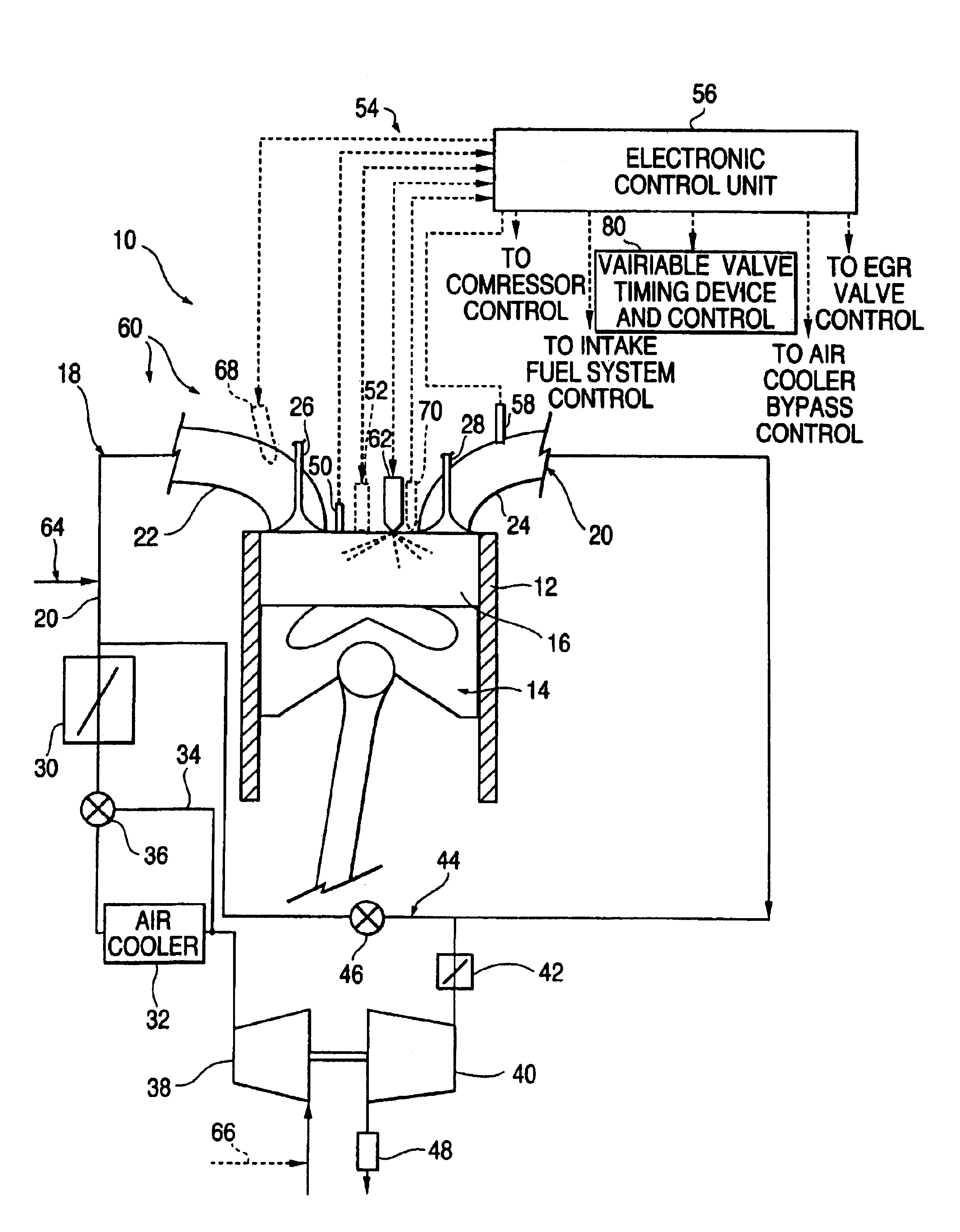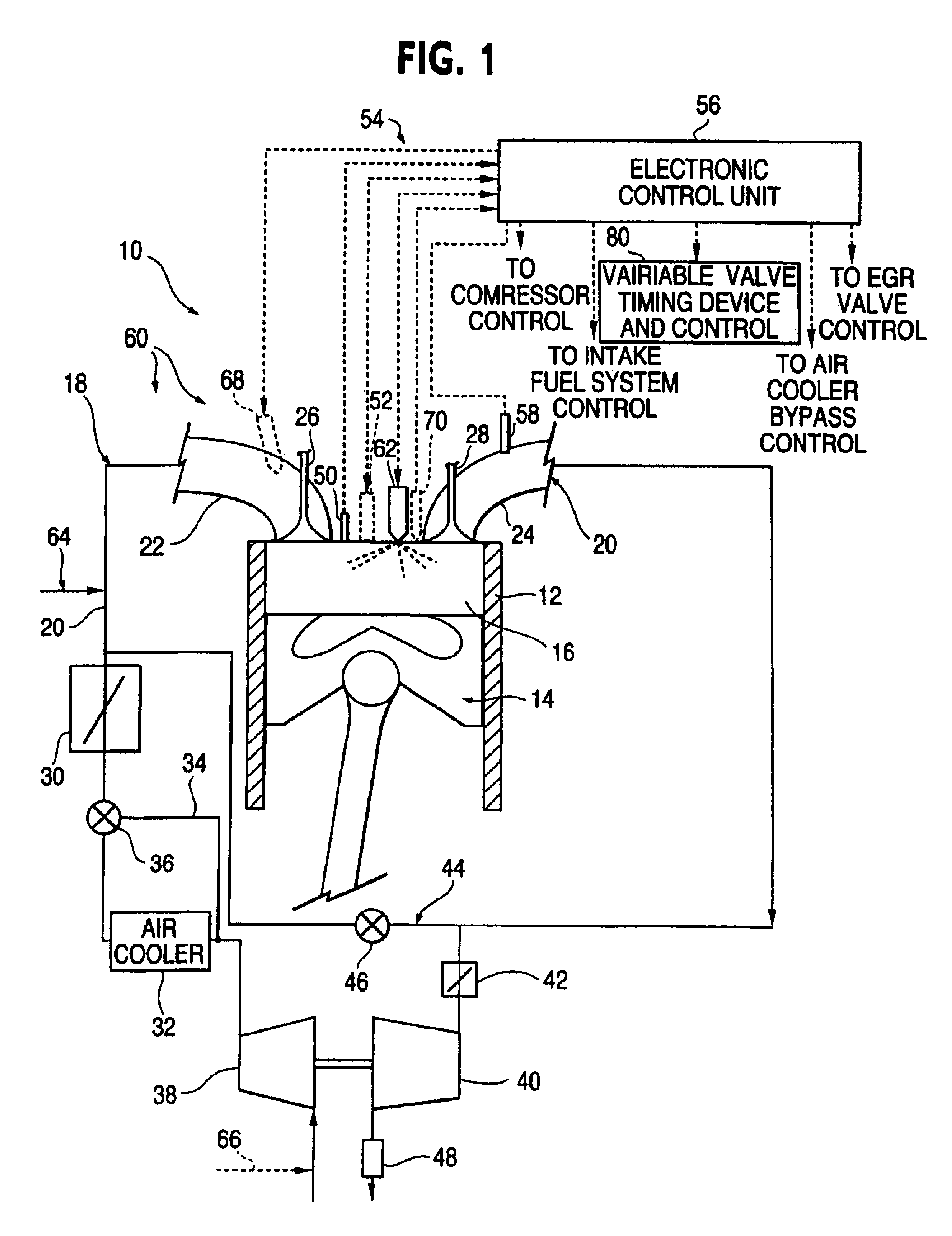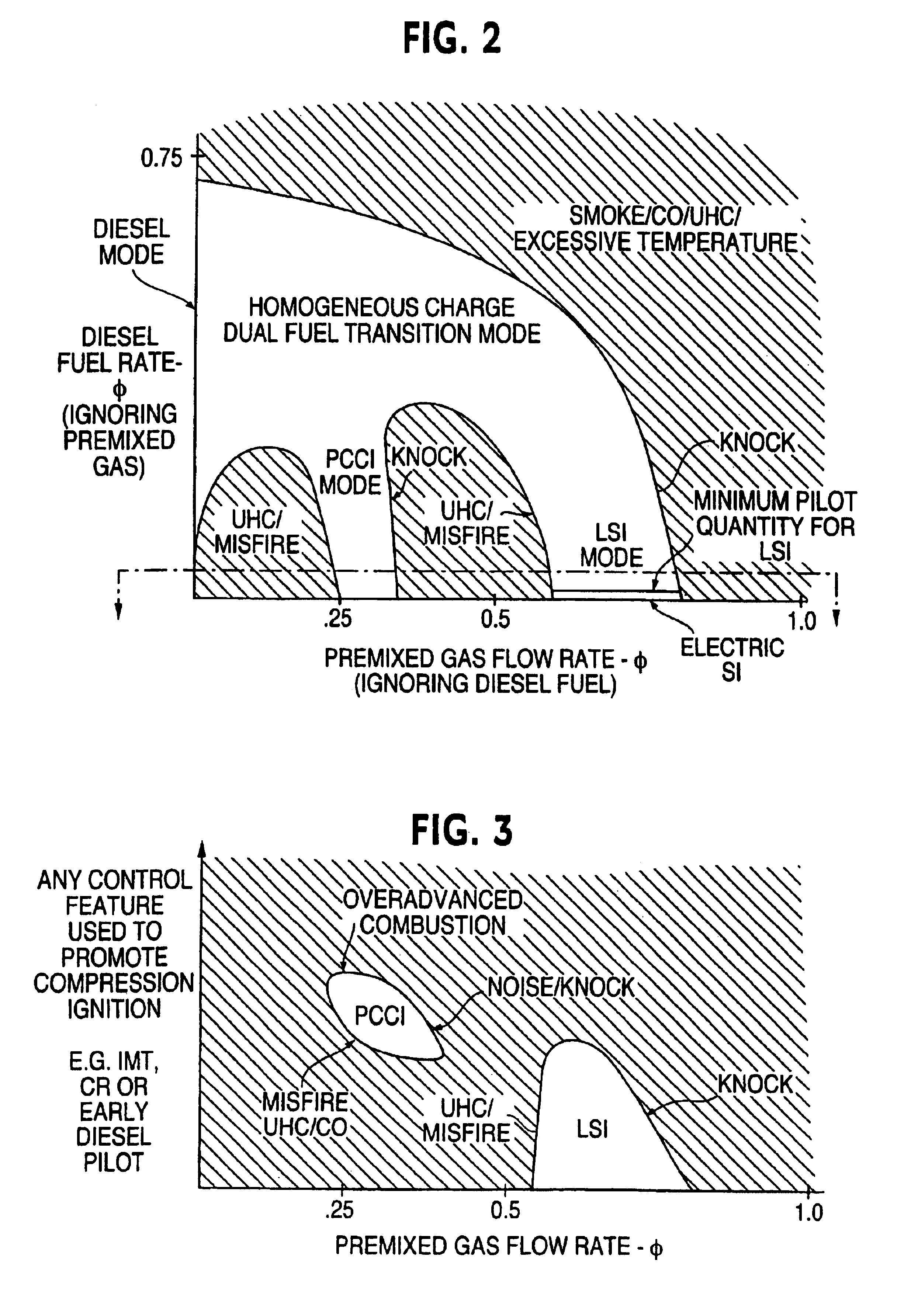Multiple operating mode engine and method of operation
a multi-mode, engine technology, applied in the direction of engine starters, electric control, instruments, etc., can solve the problems of increasing the challenge to contemporary designers, difficulty in overstating the importance of the engine or the engineering effort expended in seeking its perfection, and increasing the cost. , to achieve the effect of effective and efficient transfer of operation
- Summary
- Abstract
- Description
- Claims
- Application Information
AI Technical Summary
Benefits of technology
Problems solved by technology
Method used
Image
Examples
Embodiment Construction
[0036]The present invention as described in further detail hereinbelow is directed to an improved internal combustion engine capable of operating in and transitioning or transferring between different operating modes to improve fuel efficiency and reduce exhaust emissions while increasing startability and load handling across a range of engine operating conditions. Specifically, the multi-mode engine of the present invention, as generally shown at 10 in FIG. 1, may be operated in a premixed charge compression ignition (PCCI) mode, a diesel mode, a spark ignition (SI) mode and a homogeneous charge dual fuel transition (HCDFT) mode. A PCCI mode of operation refers to a combustion event wherein: 1) the majority of fuel is sufficiently premixed with air to form a combustible mixture throughout the charge at the time of ignition; and 2) ignition (start of combustion) is initiated by compression ignition, which includes homogeneous charge compression ignition (HCCI) engines. It should be ...
PUM
 Login to View More
Login to View More Abstract
Description
Claims
Application Information
 Login to View More
Login to View More - R&D
- Intellectual Property
- Life Sciences
- Materials
- Tech Scout
- Unparalleled Data Quality
- Higher Quality Content
- 60% Fewer Hallucinations
Browse by: Latest US Patents, China's latest patents, Technical Efficacy Thesaurus, Application Domain, Technology Topic, Popular Technical Reports.
© 2025 PatSnap. All rights reserved.Legal|Privacy policy|Modern Slavery Act Transparency Statement|Sitemap|About US| Contact US: help@patsnap.com



